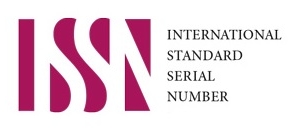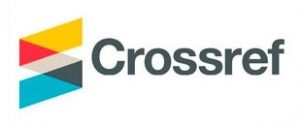Keywords cloud
12. Methodological Support for Initial Phase Optimization of Projecting Design, Trajectory Parameters and Rocket Object Motion Control Programs
Yangel Yuzhnoye State Design Office, Dnipro, Ukraine1; The Institute of Technical Mechanics, Dnipro, Ukraine2
Page: Kosm. teh. Raket. vooruž. 2018 (2); 101-116
DOI: https://doi.org/10.33136/stma2018.02.101
Language: Russian
Key words: complex problem of the optimal control theory, problem of nonlinear mathematical programming, main solid rocket motor, limitations for motion parameters and basic characteristics of the object
Full text (PDF) || Content 2018 (2)
| Country | City | Downloads |
|---|---|---|
| USA | Boardman; Columbus; Matawan; Baltimore; Plano; Miami; Dublin; Phoenix; Phoenix; Phoenix; Phoenix; Phoenix; Phoenix; Phoenix; Phoenix; Phoenix; Phoenix; Phoenix; Phoenix; Phoenix; Phoenix; Phoenix; Phoenix; Monroe; El Monte; El Monte; Ashburn; Seattle; Seattle; Ashburn; Ashburn; Mountain View; Ashburn; Mountain View; Seattle; Seattle; Tappahannock; Portland; Portland; San Mateo; San Mateo; San Mateo; Ashburn; Ashburn; Ashburn; Des Moines; Boardman; Ashburn; Ashburn; Ashburn; Pompano Beach; Seattle | 52 |
| Singapore | Singapore; Singapore; Singapore; Singapore; Singapore | 5 |
| Ukraine | Kamianske; Kharkiv; Dnipro; Dnipro; Kyiv | 5 |
| Canada | Toronto; Toronto; Toronto; Toronto; Monreale | 5 |
| Unknown | ; Brisbane;; | 4 |
| Germany | Frankfurt am Main; Nuremberg; Falkenstein | 3 |
| France | Paris; Paris | 2 |
| Netherlands | Amsterdam; Amsterdam | 2 |
| Finland | Helsinki | 1 |
| Romania | Voluntari | 1 |
15. Simulation of SMR Oscillations in Rig that Arise during Firing Bench Test
Yangel Yuzhnoye State Design Office, Dnipro, Ukraine
Page: Kosm. teh. Raket. vooruž. 2019, (1); 102-108
DOI: https://doi.org/10.33136/stma2019.01.103
Language: Ukrainian
Key words: elastic oscillations, motor starting operation, sudden loading, measurement of thrust, principle of superposition, initial thrust
1. Beskrovniy I. B., Kirichenko A. S., Balitskiy I. P. i dr. Opyt predpriyatiya po proektirovaniyu i ekspluatatsii stapeley dlya ispytaniy RDTT / Kosmicheskaya technika. Raketnoye vooruzhenie: Sb. nauch.- techn. st. 2008. Vyp. 1. Dnepropetrovsk: GP KB «Yuzhnoye». P. 119–127.
2. Bidermann V. L. Teoria mechanicheskykh kolebaniy: Uchebnik dlya VUZov. M.: Vyssh. shk., 1980. 408 p.
3. Yablonskiy A. A., Noreyko S. S. Kurs teorii kolebaniy. Ucheb. Posobie dlya studentov VUZov. Izd. 3-e, ispr. i dop. M.: Vyssh. shk., 1975. 248 p.
Full text (PDF) || Content 2019 (1)
| Country | City | Downloads |
|---|---|---|
| USA | Boardman; Matawan; Los Angeles; Baltimore;; Plano; Ashburn; Columbus; Columbus; Phoenix; Phoenix; Phoenix; Phoenix; Phoenix; Phoenix; Phoenix; Phoenix; Phoenix; Phoenix; Phoenix; Phoenix; Phoenix; Phoenix; Monroe; Ashburn; Seattle; Seattle; Ashburn; Quinton; Houston; Ashburn; Boardman; Ashburn; Mountain View; Ashburn; Seattle; Tappahannock; Ashburn; Portland; San Mateo; San Mateo; San Mateo; Ashburn; Des Moines; Boardman; Ashburn; Boardman; Ashburn; Ashburn; Ashburn; Pompano Beach | 51 |
| Singapore | Singapore; Singapore; Singapore; Singapore; Singapore; Singapore; Singapore; Singapore | 8 |
| Canada | Toronto; Toronto; Monreale | 3 |
| Netherlands | Amsterdam; Amsterdam | 2 |
| Belgium | Brussels | 1 |
| Indonesia | Jakarta | 1 |
| China | Pekin | 1 |
| Finland | Helsinki | 1 |
| Unknown | 1 | |
| France | Paris | 1 |
| Germany | Falkenstein | 1 |
| Romania | Voluntari | 1 |
| Ukraine | Dnipro | 1 |
5. Features of the development testing of the propellants deposition inside the tanks of launch vehicles
Yangel Yuzhnoye State Design Office, Dnipro, Ukraine
Page: Kosm. teh. Raket. vooruž. 2019, (2); 35-41
DOI: https://doi.org/10.33136/stma2019.02.035
Language: Russian
Key words: propellant deposition, zero-gravity stand, hydrodynamic similarity, damping and separation
Full text (PDF) || Content 2019 (2)
| Country | City | Downloads |
|---|---|---|
| USA | Boardman; Ashburn; Ashburn; Matawan; Los Angeles; Baltimore; Plano; Dublin; Ashburn; Columbus; Ashburn; Detroit; Phoenix; Phoenix; Phoenix; Phoenix; Phoenix; Phoenix; Phoenix; Phoenix; Phoenix; Phoenix; Phoenix; Phoenix; Phoenix; Phoenix; Phoenix; Monroe; Ashburn; Seattle; Seattle; Ashburn; Ashburn; Ashburn; Boardman; Ashburn; Mountain View; Seattle; Tappahannock; San Mateo; San Mateo; San Mateo; San Mateo; San Mateo; Ashburn; Des Moines; Boardman; Boardman; Ashburn; Ashburn; Pompano Beach | 51 |
| Singapore | Singapore; Singapore; Singapore; Singapore; Singapore; Singapore; Singapore; Singapore; Singapore; Singapore; Singapore; Singapore | 12 |
| Canada | Toronto; Toronto; Toronto; Monreale | 4 |
| France | Paris; Paris; Strasbourg | 3 |
| Netherlands | Amsterdam; Amsterdam | 2 |
| Ukraine | Dnipro; Dnipro | 2 |
| Philippines | 1 | |
| Finland | Helsinki | 1 |
| Germany | Falkenstein | 1 |
| Romania | Voluntari | 1 |
| Austria | Vienna | 1 |


